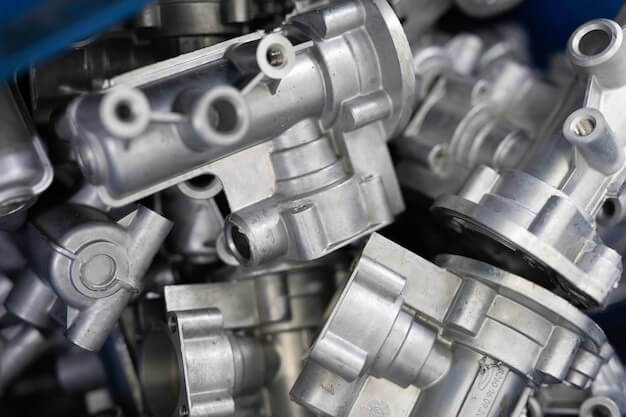Introduction to CNC Machining
CNC machining stands as a cornerstone in modern manufacturing, offering precision and efficiency in producing parts. At its core, CNC (Computer Numerical Control) machining involves the use of computers to control machine tools, ensuring high accuracy in the fabrication of components from various materials. This process is pivotal for industries requiring parts with tight tolerances and complex shapes. Material properties, such as rigidity and flexibility, play a crucial role in determining the suitability of a material for a specific application. Rigidity is essential for components needing to withstand high forces without deformation, while flexibility is vital for parts that must absorb impacts or bend without breaking. For example, aerospace components often require rigid materials to endure the stresses of flight, whereas automotive interior parts may benefit from flexible materials for safety and comfort.
Understanding Material Rigidity
When considering material rigidity in CNC machining, it’s essential to evaluate factors such as the material’s hardness, tensile strength, and modulus of elasticity. These properties determine the material’s ability to maintain its shape and resist deformation under applied loads. Additionally, understanding the relationship between material rigidity and the specific requirements of the part design is crucial for achieving optimal performance and durability.
Exploring Material Flexibility in CNC Machining
Material flexibility refers to the ability of a material to bend or deform under force without breaking, which plays a crucial role in CNC machining. This characteristic is essential when machining parts that require a degree of elasticity or resilience to function correctly. For instance, when machining a plastic part, considerations for design and functionality include:
- The material’s resistance to wear and tear.
- Its ability to return to its original shape after bending or stretching.
- How the flexibility impacts the part’s installation and use in its final application.
These factors ensure the machined part meets the required specifications for performance and longevity. Flexibility must be balanced with rigidity to achieve the desired outcome, highlighting the importance of selecting the appropriate material for each CNC machining project.
Comparative Analysis: Rigidity vs. Flexibility
In CNC machining, the choice between material rigidity and flexibility significantly impacts the manufacturing process and the final product’s characteristics. Rigidity in materials, such as metals, allows for high precision and minimal deformation under stress, crucial for components requiring tight tolerances. On the other hand, flexibility, found in materials like certain plastics, offers resilience against impacts and the ability to absorb vibrations, beneficial for parts that undergo dynamic stresses.
- Rigidity: Essential for achieving precise dimensions and shapes. Ideal for aerospace and automotive parts where accuracy is paramount.
- Flexibility: Offers durability in dynamic environments. Suitable for consumer goods that need to withstand bending and flexing.
For instance, in the production of a gear, a rigid material like steel ensures the gear’s teeth maintain their shape under heavy loads, preserving the gear’s functionality. Conversely, a flexible material might be chosen for a phone case, where the ability to absorb shocks from drops is desired. Thus, the decision between rigidity and flexibility hinges on the specific requirements of the application, balancing precision and durability.
Case Study: Selecting the Right Material for a Project
In a real-world project aimed at designing a high-performance drone frame, the engineering team faced a critical decision in selecting between rigid and flexible materials. The project’s success hinged on finding a balance between durability and weight, crucial for flight efficiency and maneuverability. The decision-making process involved:
- Evaluating the mechanical stress each component would endure during flight.
- Considering environmental factors such as temperature fluctuations and potential impacts.
- Assessing the weight implications of various materials on the drone’s flight capabilities.
The outcome was a composite design incorporating both rigid materials for structural components exposed to high stress and flexible materials for parts requiring elasticity to absorb impacts. This approach significantly enhanced the drone’s performance, demonstrating the importance of material selection in project success.
Other Articles You Might Enjoy
- Material Rigidity and Flexibility in CNC Machining: A Comparative Study
```html Introduction to CNC Machining CNC machining stands as a cornerstone in modern manufacturing, offering precision and efficiency in producing parts. At its core, CNC (Computer Numerical Control) machining involves…
- Precision CNC Machining of Steel: High-Volume Production
Precision CNC Machining and High-Volume Production As an integral part of modern manufacturing processes, Precision Computer Numerical Control (CNC) machining brings about unmatched accuracy and consistency in the production of…
- CNC Machining for Consumer Electronics: Material Selection for Heat Dissipation
Introduction to CNC Machining in Consumer Electronics CNC machining stands as a pivotal technology in the manufacturing of consumer electronics, offering precision and efficiency in producing components. This process involves…









